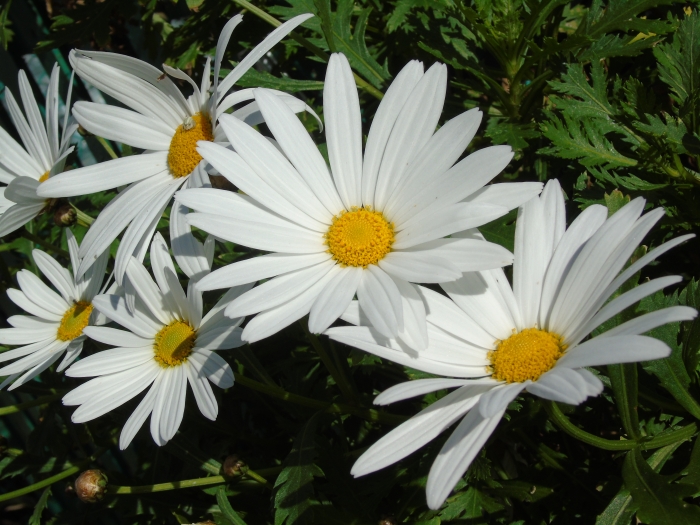Shasta Daisy
(Leucanthemum ×superbum)
Shasta Daisy (Leucanthemum ×superbum)
/
/

Fernando Losada Rodríguez
CC BY-SA 4.0
Image By:
Fernando Losada Rodríguez
Recorded By:
Copyright:
CC BY-SA 4.0
Copyright Notice:
Photo by: Fernando Losada Rodríguez | License Type: CC BY-SA 4.0 | License URL: https://creativecommons.org/licenses/by-sa/4.0 | Uploader: Drow male | Publisher: Wikimedia Commons | Title: Leucanthemum_×_superbum.001_-_Burela.jpg | Notes: {{Information |Description ={{en|1=Location taken: Behnke Nurseries, Potomac MD USA. Names: Leucanthemum x superbum 'Summer Snowball', Summer Snowball Shasta Dais Classification: Plantae > Tracheophyta > Spermatopsida > Asterales > Ast..























Estimated Native Range
Summary
Leucanthemum ×superbum, commonly known as Shasta daisy, is a herbaceous perennial plant with a classic daisy appearance, featuring large, white petals (ray florets) surrounding a prominent yellow disc. It is a hybrid developed by Luther Burbank in 1890, involving species such as Leucanthemum vulgare, Leucanthemum maximum, Leucanthemum lacustre, and Nipponanthemum nipponicum. The Shasta daisy is not native to a specific habitat but is a cultivated variety designed for garden use. It typically grows to about 2-3 feet in height and width, with a clumping form that makes it suitable for mass plantings.
The Shasta daisy is celebrated for its large, showy flowers that bloom from early summer to fall, providing a long season of interest. It is a popular choice for borders, cottage gardens, and as cut flowers due to its sturdy stems and long vase life. This plant thrives in full sun but can tolerate part shade, and it prefers well-drained soil. Regular deadheading will encourage continued blooming. While generally low-maintenance, it can be susceptible to pests like aphids and diseases such as powdery mildew. It is not considered invasive and does not have the aggressive growth habit of some other daisy species.CC BY-SA 4.0
The Shasta daisy is celebrated for its large, showy flowers that bloom from early summer to fall, providing a long season of interest. It is a popular choice for borders, cottage gardens, and as cut flowers due to its sturdy stems and long vase life. This plant thrives in full sun but can tolerate part shade, and it prefers well-drained soil. Regular deadheading will encourage continued blooming. While generally low-maintenance, it can be susceptible to pests like aphids and diseases such as powdery mildew. It is not considered invasive and does not have the aggressive growth habit of some other daisy species.CC BY-SA 4.0
Plant Description
- Plant Type: Herb
- Height: 2-3 feet
- Width: 1.5-2 feet
- Growth Rate: Moderate
- Flower Color: White, Yellow
- Flowering Season: Summer, Fall
- Leaf Retention: Deciduous
Growth Requirements
- Sun: Full Sun
- Water: Low, Medium
- Drainage: Medium
Common Uses
Bee Garden, Bird Garden, Border Plant, Butterfly Garden, Deer Resistant, Drought Tolerant, Hummingbird Garden, Low Maintenance, Potted Plant, Rabbit Resistant, Salt Tolerant, Showy Flowers
Natural Habitat
Cultivated variety designed for garden use
Other Names
Common Names: Jätteprästkrage
Scientific Names: Leucanthemum ×superbum , Leucanthemum xsuperbum , Chrysanthemum ×superbum , Leucanthemum lacustre × maximum , Leucanthemum lacustre x maximum , Leucanthemum maximum x lacustre
GBIF Accepted Name: Leucanthemum ×superbum (Bergmans ex J.W.Ingram) D.H.Kent